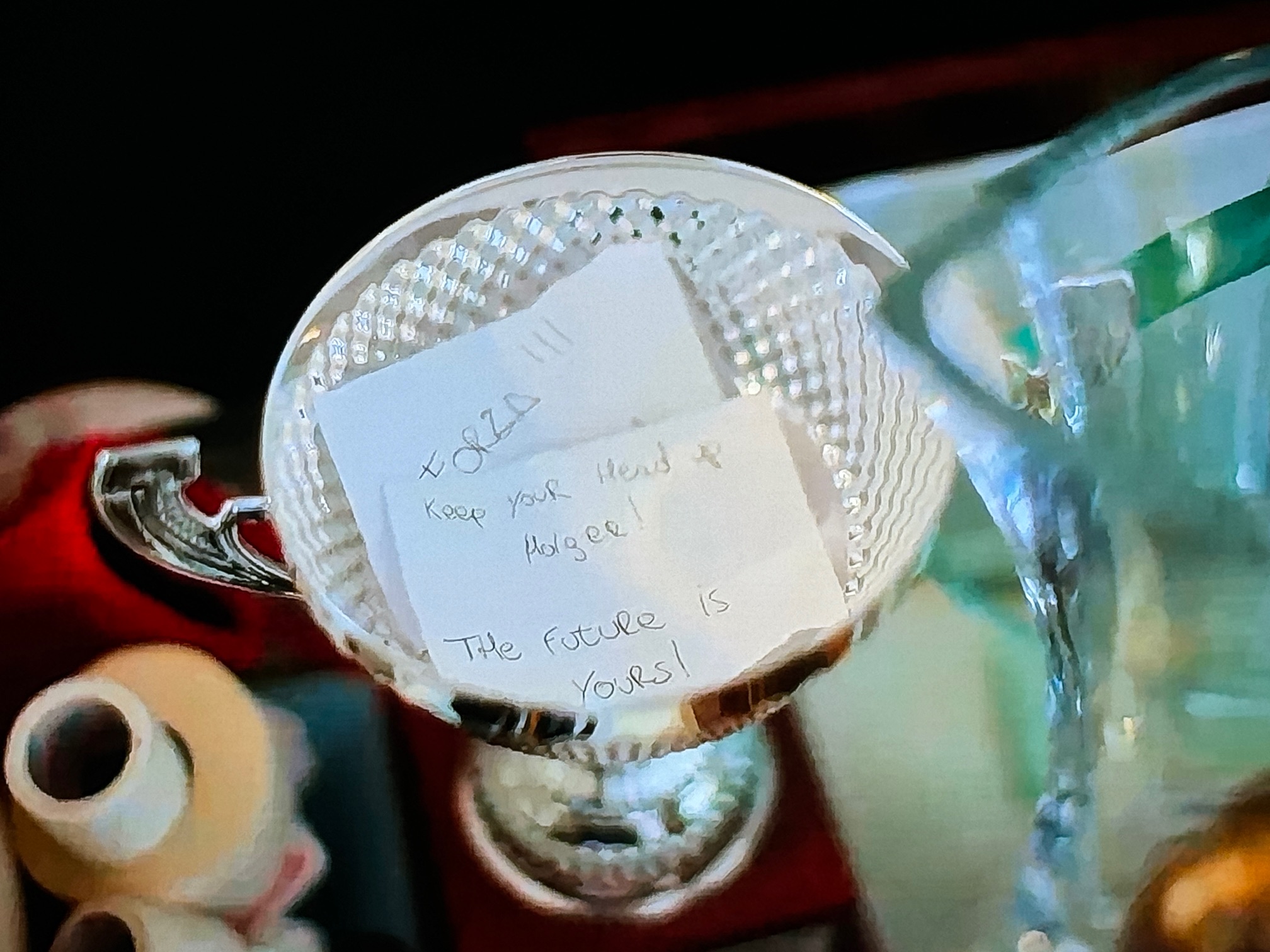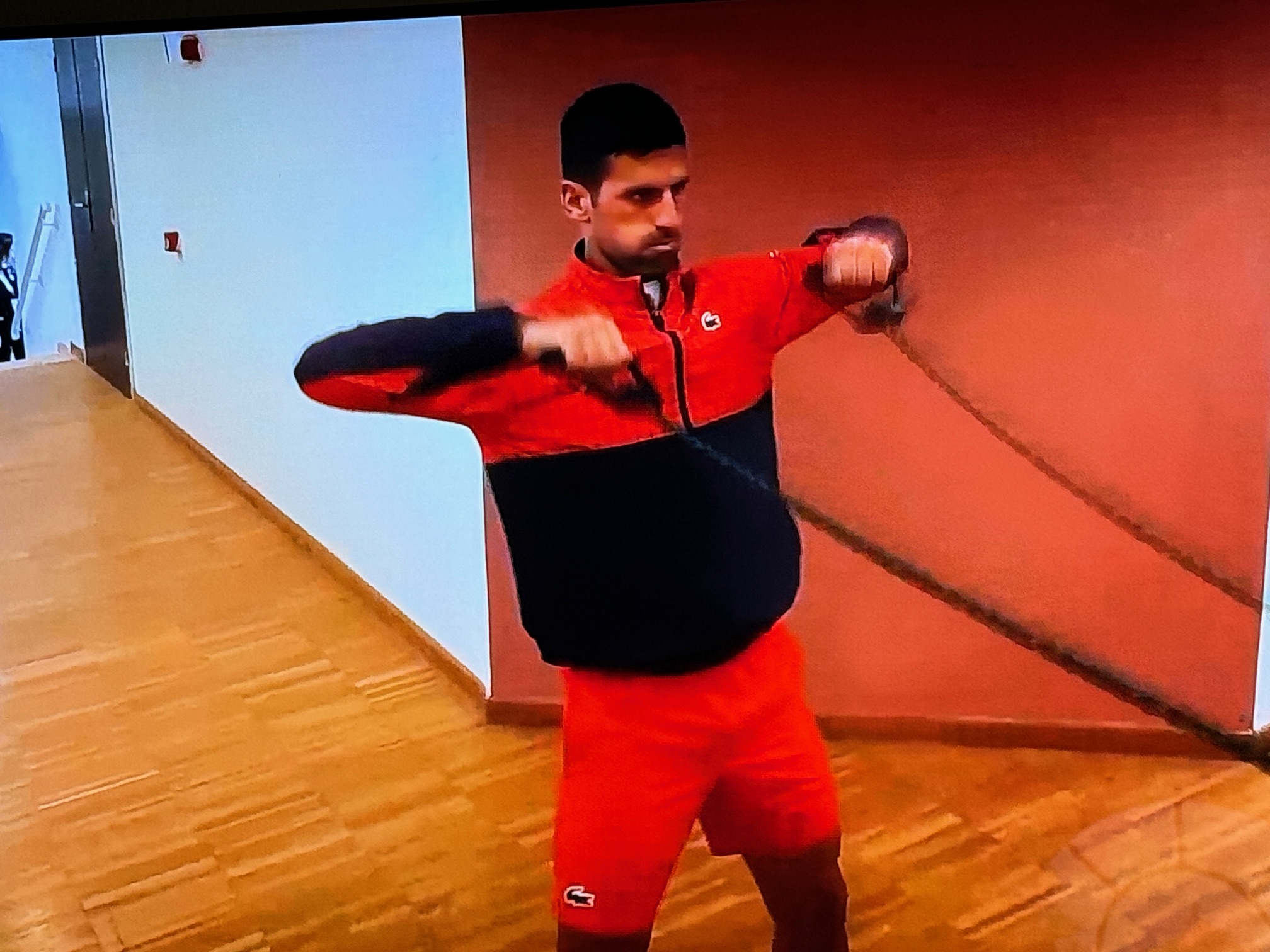Tennis Technology Tuesday
Last week in “Low-Impact Interval Training” I outlined a training routine that I developed after learning that USTA Player Development regularly uses low-impact cardio machines for interval training. Low-Impact refers to the amount of stress placed on the joints. The workout itself is extremely high intensity and effort. If I am going to work that hard, then I am also going to collect data to know if it is effective.
A heart rate monitor is an extremely useful device for assessing and analyzing the effectiveness of various training sessions. It provides real data to support or refute my own subjective opinions on the intensity of my training.
I love data. When that data is collected and graphed out for me automatically… that is training nirvana. This is why I am not content to take isolated static measurements of my pulse. That is what initially prompted me to start using a heart rate monitor in the first place. It automates and enhances data collection when training.
There are three form factors of heart rate monitoring devices available. For on court use in tennis tennis I prefer to use a chest strap model. The two other options are an arm band or wrist mounted options, such as a smart watch or fitness bracelet.
Any smart device that is capable of sending or receiving a message is prohibited from USTA and ITF competition, which eliminates most current smart watch products. Additionally, I really don’t like to play with anything on my wrists or arms. I would also observe that I really don’t need yet another awkward tan line on my body from tennis.
I have been using a Polar H10 heart rate monitor strap since the middle of 2017. It is perfect for tennis matches because the Polar Beat app on my phone collects all the data while I am playing and presents it in a clear and convenient graphical format to be reviewed once the match is completed. The following profile is from a USTA league match I played a while back.

The match progression is evident in the profile. The valleys in the graph correspond to the breaks during the end changes. In this particular match, I won the first set relatively easily at which point my opponent made a very unsportsmanlike adjustment in tactics consisting of moving the old lady back and forth on the baseline. She also stopped trying to over power me and cut way down on the unforced errors. The second set was much more competitive than the first.
Ideally, I would like my training to be oriented around performance in the 80-90% Maximum Heart Rate (MHR) zone because that is what mirrors my profile when I play a competitive match. In conjunction with last week’s “Low-Impact Interval Training” I included a graph that showed my training session of that routine that hovered around the 90% MHR mark.
In actuality, that level is a little higher than I would want to do on a consistent basis. However, as I have continued using that program across a second week, my heart rate levels has dropped significantly. The following graph is my first and my most recent training sessions.

I did not perceive a drop in my effort or intensity of the workout, but my heart rate has dropped considerably, It is also more consistency during the workout. This provides visual evidence that my cardiovascular fitness is improving. Having the data that reinforces that the training is effective is fairly motivating.
I purchased my Polar H10 Heart Rate Monitor back in 2017 and it has performed beautifully for me over that time. This device works with an app on a smart phone and does not require a wrist monitor. The Polar H10 is compatible with most professional grade gym equipment as well.
All tennis players should be incorporating some form of interval work in their training plans. To me, if you’re going to make that effort, then it also makes sense to collect and analyze the data.
Fiend At Court participates in the amazon associates program and receives a paid commission on any purchases made via the links in this article. Additional details on the disposition of proceeds from this source are available in the “About Fiend at Court” page.




